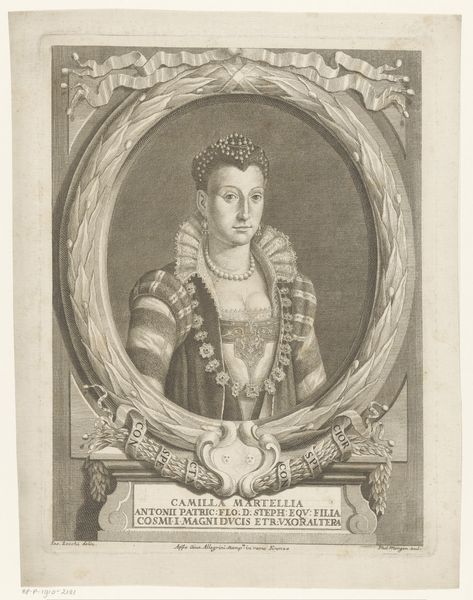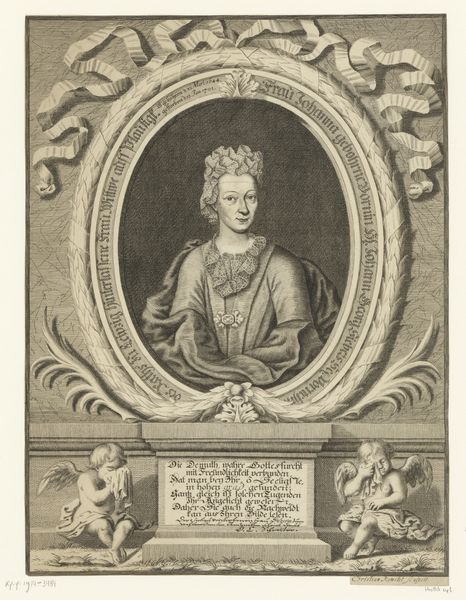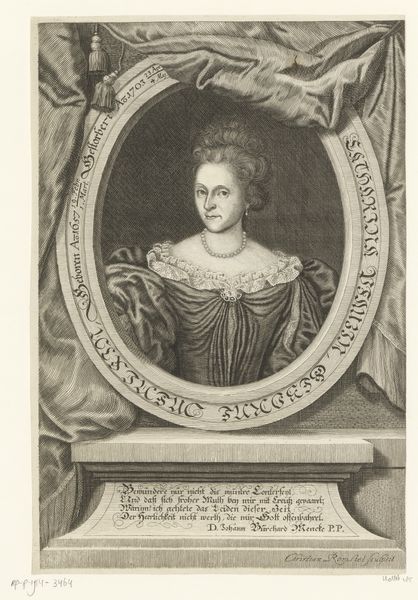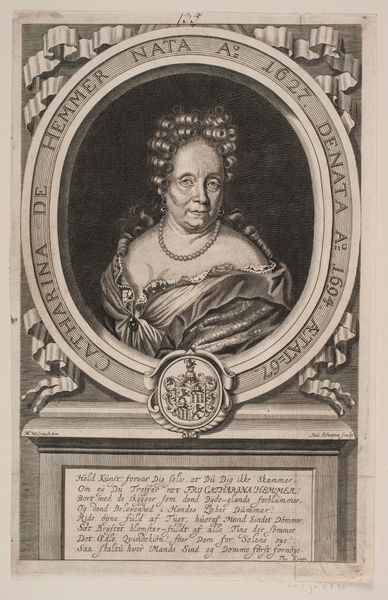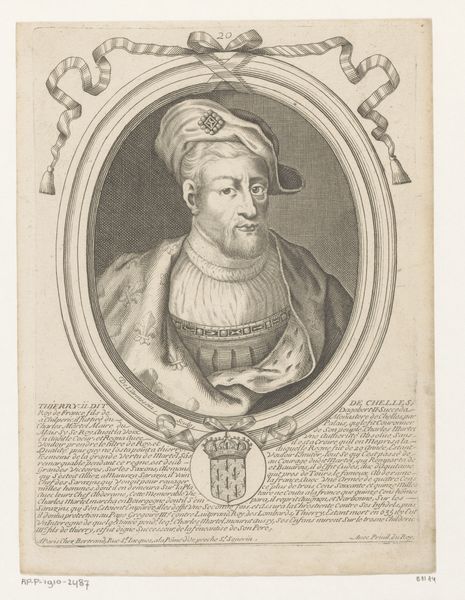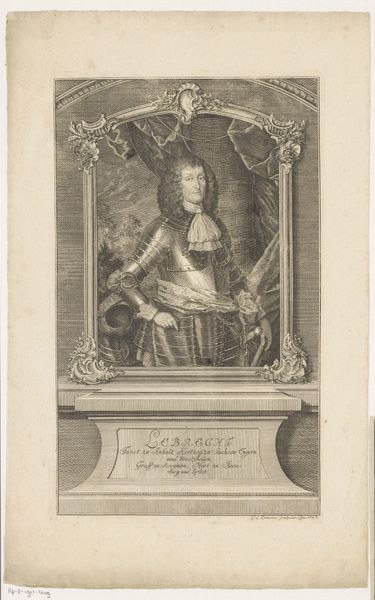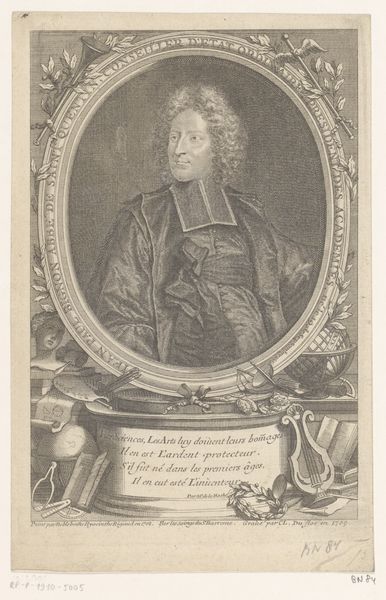
print, engraving
#
portrait
#
allegory
#
baroque
# print
#
old engraving style
#
history-painting
#
engraving
Dimensions: height 324 mm, width 226 mm
Copyright: Rijks Museum: Open Domain
Curator: At first glance, it feels like stepping into a hall of mirrors—or a sepia-toned dream. It's so ornate! Is it an official portrait or more of a sentimental keepsake, do you think? Editor: Actually, what we have here is "Portret van Juliana Hommel," an engraving by Johann Christoph Boecklin dating from somewhere between 1704 and 1709. You can find this fascinating example of Baroque printmaking here at the Rijksmuseum. Curator: Engraving, that's the word. The intricacy is astounding, especially those swirling details that look almost alive. The formal garland or frame contrasts wildly with Juliana Hommel’s face; all the surrounding text adds to the decorative—I see it. A woman embedded in the trappings of a world obsessed with symbols, crests, and lettering. Editor: Precisely. The Baroque style, flourishing at the time, loved to showcase such theatrical compositions. Notice how Juliana is centrally located within an oval frame filled with leafy ornamentation? The whole image aimed to evoke both the grandeur and grace considered appropriate for the time. The Hommel family crest appears, underscoring her social status, so she definitely came from means! Curator: A stage, indeed. Do you get a feeling that it's kind of claustrophobic, despite the ornamentation? All the emphasis is on public virtue. It almost screams of an era that values representation above all else. Editor: That hits on an important point, the function of portraits then. They weren’t so much about capturing individuality, but presenting ideal attributes for others—in this case, it emphasizes lineage, virtue, and piety for a noble woman. I also agree with you about the frame which almost becomes restrictive. Curator: Knowing it’s an engraving opens my mind, though, as I have a renewed appreciation for that skill, of conveying shadow, and a tangible life with only lines! And how that was shared. I think appreciating it isn't just looking at a pretty woman, or getting wrapped up in the aesthetics of the frame... I now see it has echoes today with status updates or personal brand-building on social media! So perhaps it’s relevant to our present, strangely enough. Editor: Absolutely. It also illustrates the role images and printed materials played at a time without photography—defining, shaping, and disseminating how people understood themselves and each other in society. Thanks for sharing that intuitive leap with branding, I totally see it too!
Comments
No comments
Be the first to comment and join the conversation on the ultimate creative platform.

